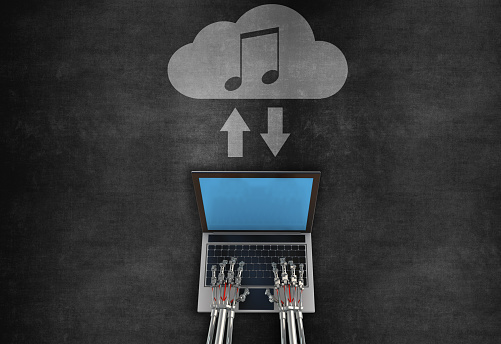
Businesses can no longer function as they once did without the help of technology. The proliferation of remote, cloud-based solutions has enabled businesses to cut costs and improve customer engagement through increased efficiency. When it comes to flexibility, scalability, and cost savings, cloud computing has provided a level of convenience never before possible for businesses. In this piece, we’ll go over some strategies for leveraging cloud-based, remote solutions to increase productivity and adaptability in your business.
Cloud Based Solutions, what are they?
As their name implies, cloud-based remote solutions enable businesses to manage and gain access to their data and applications remotely, via the cloud. This sort of solution is particularly useful for companies with multiple locations or whose employees are frequently on the road.
Businesses can save a lot of money on IT costs and gain a lot in scalability and flexibility by switching to cloud-based, remote solutions. Safety and disaster preparedness can also be bolstered by these solutions.
There are a variety of remote options available, including public, private, and hybrid clouds. The specific needs of your business and the available budget are just two of the many factors that should be considered when settling on a viable solution.
An expert service provider will be able to advise you on the most suitable cloud-based remote solution for your company and help you make the switch with minimal disruption.
The benefits of cloud-based, server-less applications
Businesses can benefit greatly from implementing remote cloud-based solutions. The fact that files and software can be accessed whenever and wherever is probably the most obvious perk. This can be extremely useful for businesses with mobile or remote staff. Cloud-based solutions are scalable, meaning that businesses only pay for the resources they use. For businesses whose requirements evolve over time, this can have a significant financial impact.
Another advantage of cloud-based remote solutions is that they increase security. Data can be duplicated in case of a disaster by storing it in multiple locations. As a result, disasters like hardware failure or natural disasters are less likely to result in lost data. And even if the cloud service is compromised, many cloud-based solutions have disaster recovery procedures in place, so businesses can rest easy.
Finally, remote cloud-based solutions can improve office-wide teamwork and communication. Employees can easily share files and collaborate on projects regardless of their physical location. Teams can easily communicate despite physical distance thanks to modern technologies like video conferencing and instant messaging.
Cloud-based, off-site solutions: a primer
Taking advantage of remote, cloud-based solutions is a great way to help your business grow. The following should serve as a primer:
You can’t get anywhere without 1) figuring out what you need, and 2) taking a look at what you want to get out of it. Why do you need cloud-based, remote services? Verify that the solutions’ benefits will outweigh their costs for your business.
2 – Educate yourself. It is not fair to lump all remote solutions into the cloud. It’s wise to read up on the product and compare its features before making a final decision.
- Go with a reliable service. Once you have a shortlist of potential providers, you can narrow it down further by considering each one’s reliability, support, and safety measures. In this case, we suggest IPPBX as a potential service provider. Their cloud service is dependable, risk-free, cheap, and mobile-friendly.
Step four: sign up for an account and start utilizing the service. Your business can immediately start reaping the benefits of cloud-based, remote solutions after you’ve signed up for a service and created an account.
In this article, we will discuss the various types of cloud-based, remotely accessible solutions.
Numerous remote, cloud-based options exist for businesses. Some of the best-known examples are:
IaaS is the first type of cloud computing, and it allows businesses to quickly and easily set up a reliable and adaptable computing environment without having to invest in costly on-premises hardware.
Second, businesses are given a comprehensive setting in which to design, implement, and maintain cloud-based software applications with Platform as a Service (PaaS).
SaaS (Software as a Service) is a cloud-based model for delivering software to businesses for remote use. When compared to buying individual software licenses, the cost of this solution is much lower because it is typically based on a subscription model.
Finally, a service known as Business Process as a Service (BPaaS) facilitates the outsourcing of HR and CRM functions, among others, to external vendors. This helps free up internal resources and increases output.
When a company uses STaaS (Storage as a Service), it can store its data in a remote location that is both easily accessible and easily managed from anywhere with an internet connection. This method is widely used because of its utility for archiving or storing large amounts of data.
Advice on Making the Most of Remote Cloud-Based Services
Different cloud-based remote solutions offer different benefits for businesses. Choosing and implementing the best solution for your business is easier with these pointers in mind.
The first step in implementing a remote solution for your business is to determine its goals. Use cases like file sharing, group work, managing projects, etc., should all be included in your list.
Knowing what you need will help you narrow down the options. Spend some time comparing the various cloud-based remote solutions to find the one that meets your requirements.
Third, test your solution thoroughly before rolling it out to everyone. Make use of the solution’s free trial period to ensure it is user-friendly and meets your expectations.
When a satisfactory answer has been located, it is time to put it into action for the business. Depending on the solution you choose, there may be slight variations in the procedures you need to follow in order to complete the transition.
Fifth, after the solution is live, make sure your staff has been trained to make the most of it. You can ensure a problem-free outcome in the future by putting in the effort now.
Conclusion
The implementation of remote, cloud-based solutions has many advantages for businesses. By utilizing remote, cloud-based technologies, businesses can streamline their processes, increase productivity, and cut costs. By maintaining easy access to and secure storage for crucial data and applications, businesses can reduce their risk. Cloud-based services are quickly becoming an indispensable tool for businesses of all sizes when it comes to taking advantage of opportunities and warding off threats.










